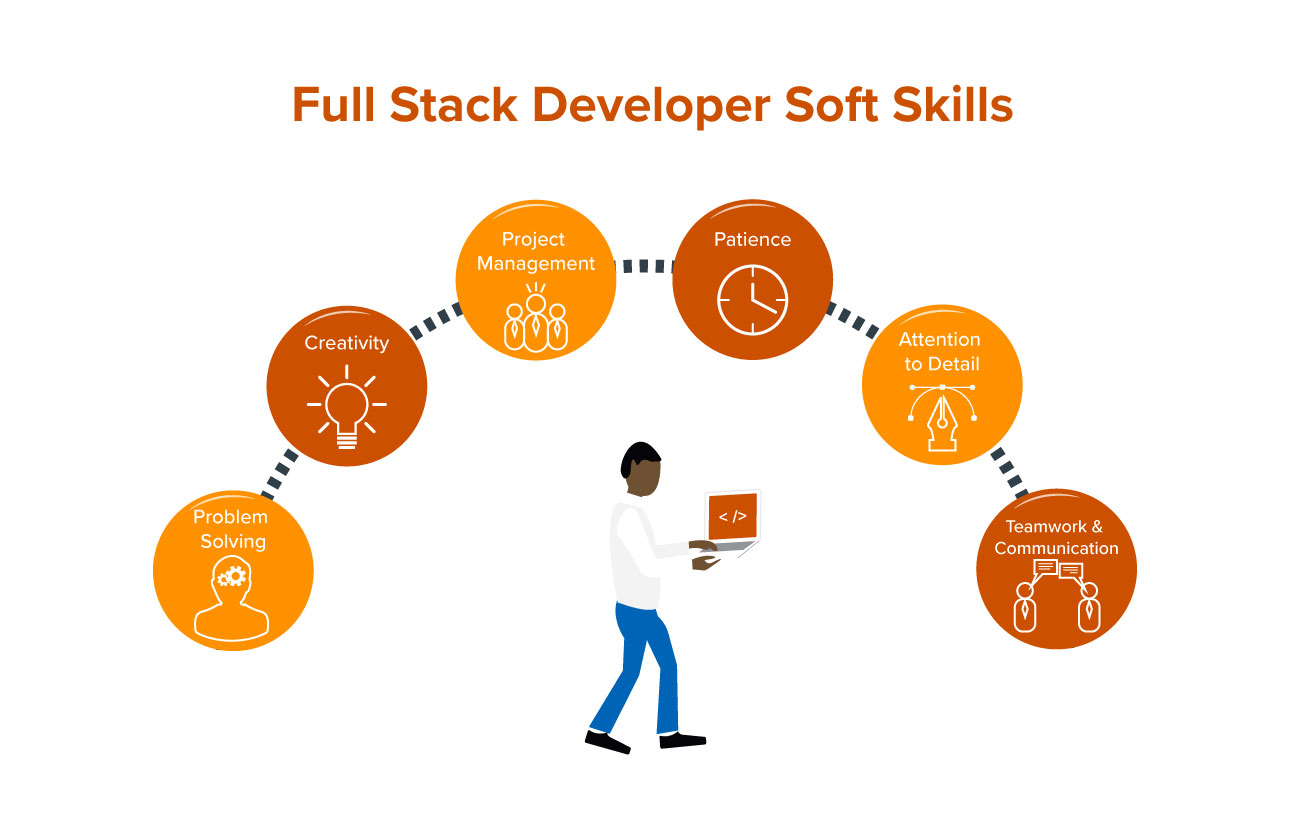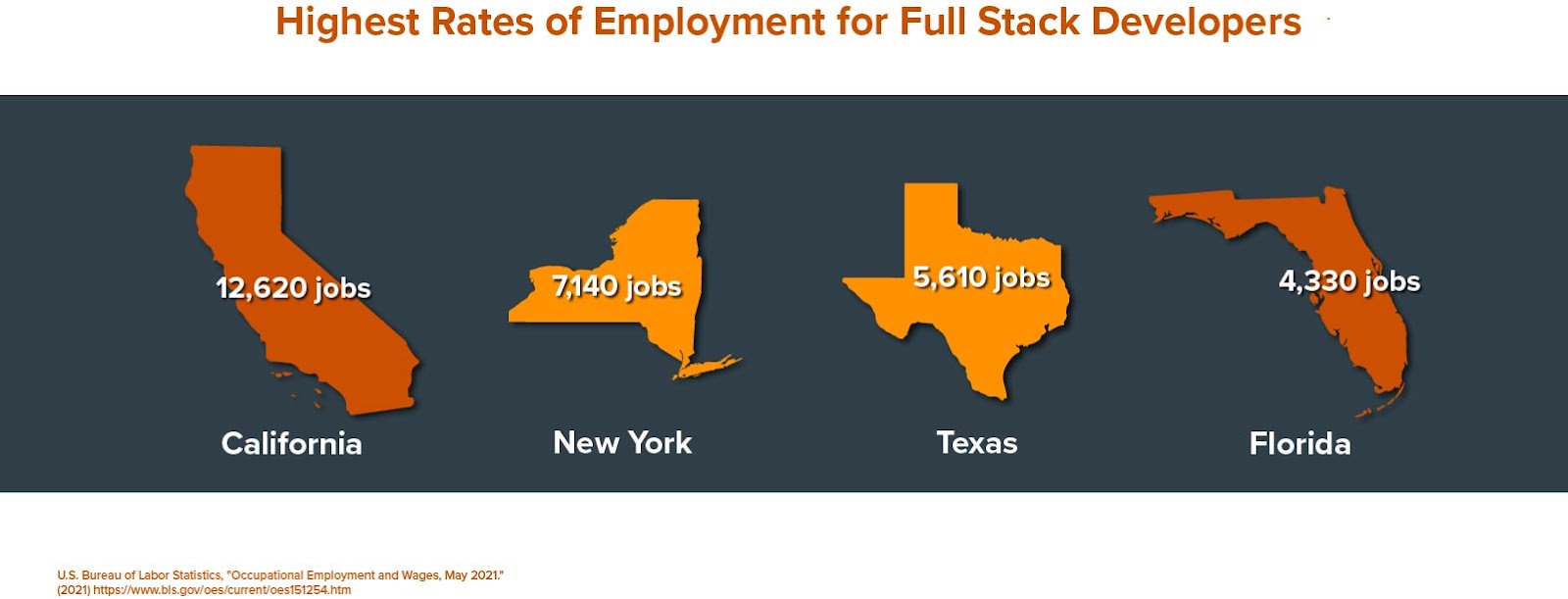Coding skills can open up a world of opportunity for those who are willing to learn. Individuals with specialized programming skills can immerse themselves in a variety of diverse, exciting career paths: web developer, web designer, front end developer, back end developer, systems administrator, or application developer. The potential is limitless.
However, if you’re determined to become a versatile player in the tech world, consider becoming a full stack developer. As a full stack developer, you’ll contribute to all aspects of a project — from designing the look and feel of the website, to coding its underpinning functionality. With full stack developer skills, you’ll position yourself as a versatile resource in the world of web development.
Of course, you might be asking, “What is a full stack developer?“ At a high level, full stack web developers work on both sides of a website or application to create a seamless user experience. They cultivate the look and feel of a site through the user interface on the front end (client side), and write code to create site stability and functionality on the back end (server side).
Full stack development is a challenging pursuit. However, the skills full stack developers possess are valued in the marketplace and are essential to the e-commerce and online presence of every company across the globe.
Read on to explore how to become a full stack web developer, job prospects and responsibilities, and the skills and education you’ll need to join the full stack field.

 Live Chat
Live Chat


